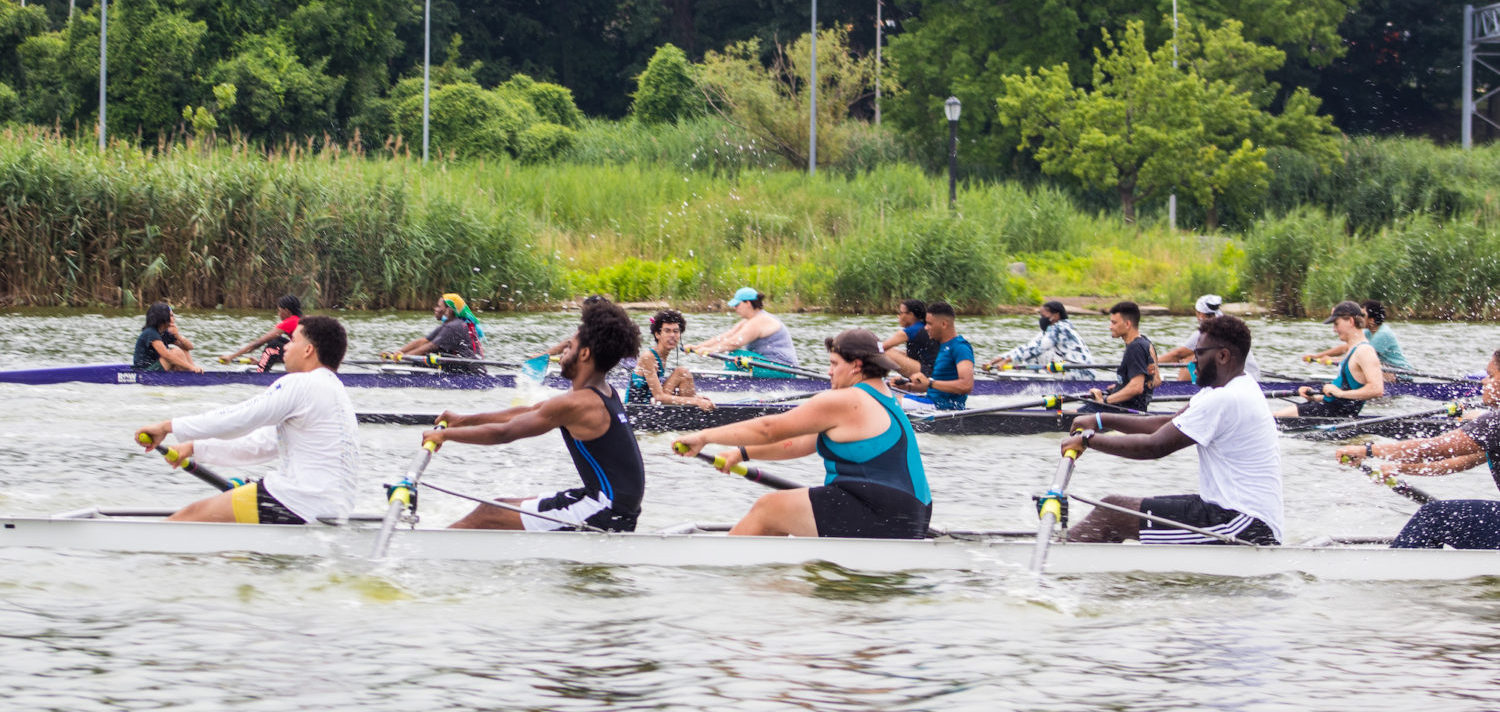To Our Rowing Friends and Colleagues:
We are heartened to see the outpouring of support you’ve shown for Black communities while expressing an interest in listening and learning. We all have a responsibility to stop the systemic oppression and killing of Black people in our country and our communities. At this moment, it is particularly important to support and amplify the individuals and organizations leading this work. We have put together a list of resources that highlights some of these organizations and helps you learn more about actions we can take to change the larger societal injustices that must be addressed before any meaningful change can occur. You can find our curated list of mental health resources, educational materials about anti-racism, and ways to take action here.
We also hear your calls for change within the rowing community specifically and hope that we can help. Both of our organizations are committed to actively increasing access to and diversity in the sport of rowing. The systems that have kept rowing a predominantly White space are the same ones that continue to oppress Black communities and other communities of color in all areas of life. These systems must change. Our sport must change. We challenge you to do more than show support. We challenge you to take action.
We acknowledge that our organizations are not perfect. We still have room to improve and need to improve. Below is our advice based on our first-hand experience of what has worked for us. Our organizations have come together to suggest strategies you can use to make your boathouse a safer and more welcoming space for Black athletes and other athletes of color. We hope you find them useful and are able to put them into action.
With Love,
Philadelphia City Rowing & Row New York
8 Ways To Take Action and Make Your Boathouse More Inclusive
1. Consider how and why your club should be more diverse and inclusive.
- What groups of people are missing or underrepresented in your membership? Who lives, works, and recreates in the area near your boathouse? For scholastic and collegiate programs, compare the student body to your team.
- Understand why it is important to have a diverse and representative membership. Consider what message you are sending people in and outside your club? How does a lack of diversity affect the long-term sustainability of your organization and the sport? How does it affect your members and your neighborhood?
- Systemic Racism Explained
2. Make anti-racism, diversity, and inclusion a priority of your organization. Build consensus around the need for changes and take action to make your club more equitable and inclusive.
- Make changes to your mission, programs, and practices. Simply adopting a diversity and inclusion policy isn’t enough.
- Starting the conversation about diversity and inclusion
- Explanation of equality v. equity
- Explanation of equality v. equity
3. Create a culture of respect and anti-racism that is welcoming to all. Educate yourself about the unique challenges faced by rowers of color and work to ensure they have the same positive experience and opportunity to succeed as other athletes in your club. When new athletes join your club, introduce yourself. Smile. Be friendly.
4. Provide educational workshops and professional development opportunities for staff and members focused on inclusion, integration, cultural diversity, and cultural competence. Hold one another accountable for advancing these issues. Do not tolerate discrimination, disrespect, or exclusionary behavior. Instances of overt and covert racism should be taken seriously and addressed promptly.
- Learn from other sports. Stress the importance of this education to your staff and club members. Integrate what you learn into the values, goals, and practices of your club.
- Examples of common microaggressions
5. Create opportunities for people without rowing experience to learn to row and become members of your club and the broader rowing community. Direct your outreach to communities that are under-represented in your club.
- Appoint a community outreach and inclusion representative (paid or volunteer) to focus on ways to engage the broader community in rowing. This person does not need rowing experience, just an understanding of the community you’re trying to reach and a passion for what you’re trying to accomplish.
- Consider ways to eliminate or reduce the barriers to entry. For students, barriers can include transportation, gear, and swimming lessons.
- Ladder of Youth Participation (this example shows how to build inclusive and empowering programs for young people, but the same principles can be applied to other groups.)
6. Make your programs more economically accessible by creating a scholarship fund, or by providing free or discounted access to your existing programs to individuals from racial or ethnic groups that are under-represented in your club.
- Reduce the upfront costs of membership by eliminating initiation fees and creating monthly or quarterly payment programs.
- An overview of the “pay to play” issue affecting youth sports on a broader level
7. Hire coaches and staff of color. Support initiatives that help build a pipeline of highly qualified coaches of color. Positions need not be limited to candidates with prior rowing experience, which can be a systemic barrier to otherwise qualified candidates (e.g., strength and conditioning coaches, fundraising professionals, accountants, etc.).
- The rowing community is missing out by not broadening its horizons. People should understand that due to systemic racism in rowing, prior rowing experience limits the pool of applicants, depriving organizations of different perspectives, role models for younger athletes, etc.
- Practical Ways to reduce bias in your hiring process



